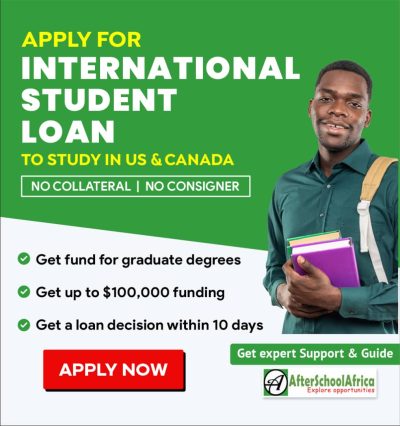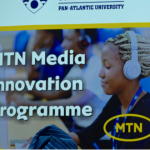The cost, timeline, and application process for a J-1 visa
Table of Contents
What is a J-1 visa?
J-1 (exchange visitor) visas are granted to nonimmigrants visiting the country as a part of formally sanctioned exchange programs in the sciences, arts, or education. Professors, researchers, students, teachers, au pairs, and other specialists of all stripes may be among the beneficiaries (a more comprehensive list is provided in the “Eligibility” section).
Sponsors are required to have U.S. Department of State approval and may be either private or public institutions. The ultimate goal of the J-1 visa program is to promote intellectual and cultural exchange between nations.
Cost
Fees for the J-1 visa program will change based on the length of stay, the category, and the sponsor. To find out the exact cost breakdown, the applicant should make sure to get in touch with the sponsor in advance. The applicant’s name will be entered by the program sponsor into the Student and Exchange Visitor Information System (SEVIS), which will then generate Form DS-2019 (officially called “Certificate of Eligibility for Exchange Visitor Status”). At this point, the applicant might have to pay the $220 I-901 SEVIS fee. Occasionally, program sponsors will cover this expense. The nonimmigrant application processing fee is $185, but applicants who are enrolled in government-sponsored programs may be exempt from paying this cost. The applicant may also need to pay a reciprocity fee after the interview, in addition to these fees. To find out the exact cost breakdown, the applicant should make sure to get in touch with the sponsor in advance.
Timeline
Depending on the applicant’s home country, there will be differences in the J-1 visa processing times. For example, applicants in Beijing, China will only need to wait two days after submitting their application and paying the processing fee, whereas those in Bogotá, Colombia, will have to wait 22 days before an appointment becomes available. You can use the U.S. Department of State’s tool to get an up-to-date estimated wait time.
Note:
These durations exclude any extra administrative processing, which, depending on the situation, could greatly lengthen the process.
Eligibility
The J-1 visa requirements are specific to each program category and will be covered in this section. The Code of Federal Regulations contains a lot of the information in this section (22 CFR Part 62).
1. Language Proficiency
Whichever category they fall under, the candidate must use one of the following to show that they know enough English:
- Signed transcripts from a university or English-language school attesting to the applicant’s passing of an officially recognized exam
- An interview by phone or in person with the exchange program sponsor
2. Insurance
The program regulations specify the minimum amount of medical coverage that each applicant must have. J-2 dependents, such as spouses and single children under 21, also need to have the necessary insurance. The sponsor, such as the college or university, can assist the applicant in obtaining the required insurance if they are not covered or if their coverage is insufficient. During the exchange program, the applicant may be asked to leave if they lose their coverage.
3. Exchange Program Categories
There are variations in J-1 visa requirements for each program category. We’ll give a brief explanation of each category below.
4. Student
A foreign national studying in the United States who wants to apply for a J-1 visa must intend to engage in one of the following activities:
- Enroll in all available courses at a secondary or post-secondary educational institution that has been accredited.
- Take up training pertaining to their area of focus.
- Learn English at a post-secondary institution with accreditation (or an approved program)
- Work as a full-time intern for a program run by a secondary school that has received approval.
5. Short-Term Scholar
If, during a brief visit, a professor, research scholar, or someone with similar training does one of the following, they may be granted a J-1 visa:
- Train
- Observe
- Lecture
- Demonstrate specialized skills.
- Consult
Any of these pursuits could take place there, for example:
- Museums
- Research institutions
- Libraries
- Post-secondary academic institutions
6. Trainee
The following requirements must be met in order for the applicant to be eligible for a J-1 visa if they intend to enroll in an organized training program linked to their field of employment:
- They have worked in the field for a year in addition to holding a degree or certificate from an authorized institution.
- They have worked in their field for five years (outside the United States).
Keep in mind that the sponsor needs to be authorized for this specific job.
7. Teacher
If a foreign national holds a bachelor’s degree in education or a closely related field, they are eligible to apply for positions as teachers. They have to:
- Possess two years of full-time teaching experience, obtained following degree completion.
- When requesting a J-1 visa, identify as a teacher.
8. Professor
Professors may apply to do one or more of the following:
- Lecture
- Teach
- Consult
- Observe
They are free to work on research projects as well, provided the sponsor approves. They might engage in these activities in locations such as:
- An accredited post-secondary academic institution
- Libraries
- Museums
8. Research Scholar
An applicant may choose to do one or more of the following if they are applying as a research scholar:
- Conduct research
- Consult
- Observe
If the sponsor permits it, they may also pursue a career in teaching. They might engage in these activities in locations such as:
- Libraries
- Museums
- Accredited post-secondary academic institutions
9. Specialist
If an individual possesses specialized knowledge in a particular field and intends to observe, consult, or exhibit their expertise once in the United States, they may apply as a specialist.
10. Persons of Similar Description
J-1 visa applicants may apply if their training or occupation is recognized by the State Department as being comparable to the previously mentioned categories. Additionally, once in the US, these applicants must plan to study, teach, lecture, observe, instruct, conduct research, exhibit specialized skills, consult, or receive training. The State Department has classified the following groups as “persons of similar description.”
- Alien physician
- International visitor
- Government visitor
- Camp Counselor
- Au pair
- Summer work and travel
- Intern
For more information of the criteria for each category, see 22 CFR Parts 62.20 to 62.32. Note that the sponsor will likely provide this information ahead of time.
It is noteworthy that a few categories must leave the country for a minimum of two years in order to qualify for some benefits. You can avoid this requirement by applying for a J-1 visa waiver.
You can check if you qualify for a J-1 exchange student visa by checking your eligibility.
How to Apply
Application instructions for the J-1 visa may differ from country to country. Therefore, the applicant should make advance contact with the American embassy or consulate in their area. We’ll walk you through the J-1 visa application process step-by-step below.
Step 1: The Online Visa Application
First, the applicant should complete Form DS-160 (officially called the “Online Nonimmigrant Visa Application”) and print out the confirmation page, which they’ll need at their interview. During this process, they will need to upload a photo, following strict guidelines.
Note: The applicant can submit their application through the State Department’s portal.
Step 2: Make an Appointment
Once the applicant has finished the nonimmigrant visa application, to set up an interview, they can get in touch with the American embassy or consulate in their area. The applicant may find it more difficult to obtain a J-1 visa, even though they are free to apply at a U.S. Embassy outside of their country of origin. As was previously mentioned, wait times differ by region.
Step 3: Prepare for and Attend the Interview
Before the interview, the applicant in some countries might have to pay the application processing fee. In this case, they should go to the U.S. Embassy’s website to ascertain the method of payment. The applicant must gather all necessary paperwork before the interview, along with any accompanying dependents, after they have paid. The following are the necessary documents:
- A passport that will remain valid for at least six months after you leave the country
- A picture in the format of a passport that complies with State Department regulations
- confirmation that the application processing fee has been paid (if requested).
- page of confirmation for the online visa application DS-160
- Form DS-2019, which the sponsor will give following the applicant’s name and any dependents’ names being input into the SEVIS database.
- For applicants using the trainee and intern categories, please use Form DS-7002, officially known as the “Training/Internship Placement Plan.”
The consular officer may ask for further documentation if necessary to demonstrate that the applicant plans to return home after the program is over.
After bringing the required documentation, the candidate can go to the interview and present their eligibility for the Exchange Visitor Program. The applicant should be prepared for their fingerprints to be taken during the interview. In the event that the visa is granted and no additional administrative processing is needed, the applicant will have to pick up their passport and visa and pay any outstanding fees. For additional information, Boundless has created a guide regarding how to prepare for the J-1 visa interview.
Step 4: Entering the United States
The applicant must bring their passport, visa, and Form DS-2019 to the airport (or other port of entry) to enter the United States. Whether or not to allow the applicant to enter the country is at the discretion of the U.S. Customs and Border Protection (CBP) agent.
Subject to certain restrictions, the applicant may be able to extend their stay in the country or even obtain a green card.
Frequently Aksed Questions about J-1 Exchange Visitor Visa
What is the difference between the J-1 and the F-1 visa?
The J-1 visa is used for programs involving educational exchanges, and it can be granted to au pairs and camp counselors in addition to students. Only students enrolled for a specific amount of time in a U.S. school or college are eligible to apply for an F-1 visa. Every visa also has unique requirements. For example, a student on a J-1 visa must demonstrate that 51 percent of their financial support originates from an educational institution, whereas an F-1 visa allows funding from any source.
Read Also:
What is a M-1 Student Visa? Full Review
What is Form DS-160? Full Review









